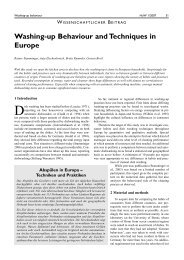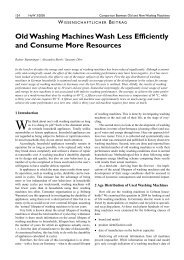Development of a novel mechatronic system for mechanical weed ...
Development of a novel mechatronic system for mechanical weed ...
Development of a novel mechatronic system for mechanical weed ...
You also want an ePaper? Increase the reach of your titles
YUMPU automatically turns print PDFs into web optimized ePapers that Google loves.
2 State <strong>of</strong> the art<br />
2.1 Intra-row <strong>weed</strong> control<br />
State <strong>of</strong> the art<br />
Intra-row <strong>weed</strong>ing is the last but very important stage <strong>of</strong> successful non-<br />
chemical <strong>weed</strong> control. It shall be considered as a final <strong>weed</strong> elimination<br />
procedure and not as a primary method <strong>of</strong> <strong>weed</strong> control. However, there are<br />
many technical problems associated with intra-row <strong>weed</strong>ing, which are the main<br />
reason why even today the hand <strong>weed</strong>ing is still the most frequently used<br />
method <strong>for</strong> intra-row <strong>weed</strong>ing on organic farmlands in Western European<br />
countries. Mechanisation <strong>of</strong> the intra-row area cultivation is very complex and<br />
there are two streams <strong>of</strong> thought <strong>for</strong> solving this problem: using passive and<br />
active implements.<br />
2.1.1 Passive tools <strong>for</strong> intra-row <strong>weed</strong> control<br />
Well-known passive implements <strong>for</strong> intra-row <strong>weed</strong>ing are finger <strong>weed</strong>ers and<br />
torsion <strong>weed</strong>ers. Finger <strong>weed</strong>ers consist <strong>of</strong> plates rotating at an acute angle<br />
with the ground which have appendages, or fingers, extending radially from the<br />
disk (see Figure 2.1 a). One disk operates on each side <strong>of</strong> a plant row, and the<br />
distance from the plant can be adjusted to several centimetres apart to<br />
interlocking with as much a 5 cm overlap. The basic idea <strong>of</strong> this <strong>weed</strong>ing<br />
method is to uproot the <strong>weed</strong>s and eject them from the crop row. Usually, finger<br />
<strong>weed</strong>ers are very effectively combined with flat hoes between the rows <strong>for</strong>ming<br />
a tool <strong>for</strong> simultaneous inter- and intra-row hoeing which can cover several crop<br />
rows in one passage. These implements require very precise steering <strong>for</strong> row-<br />
following, which can be done manually or automatically with vision <strong>system</strong>s<br />
such as Ecodan and Robocrop.<br />
A major advantage is the flexibility, as a finger <strong>weed</strong>er can work on almost any<br />
type <strong>of</strong> crop which has sufficient distance between the rows.<br />
19





